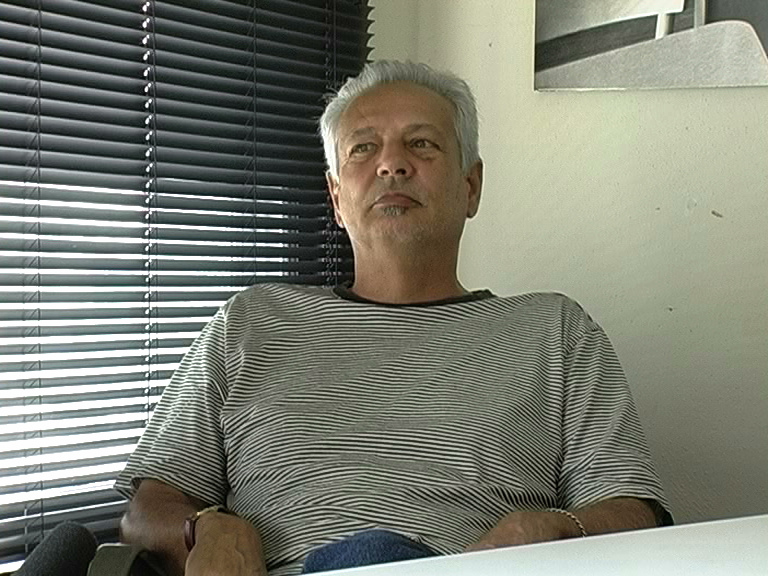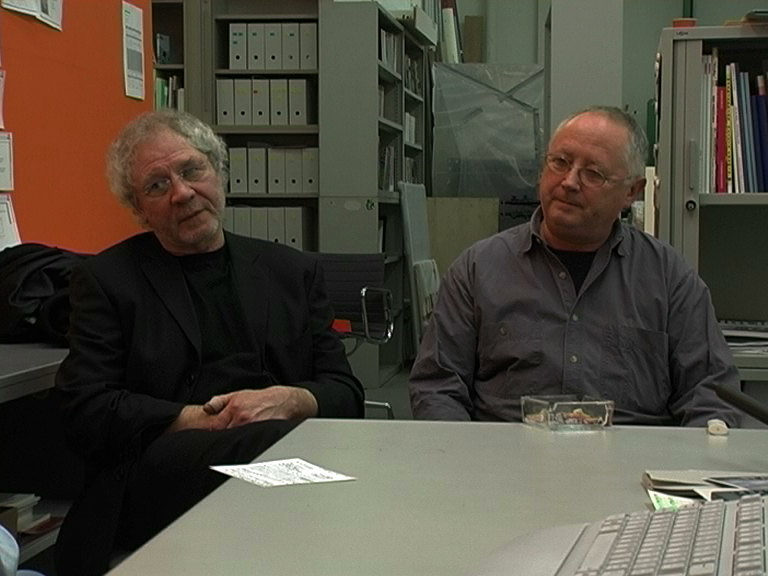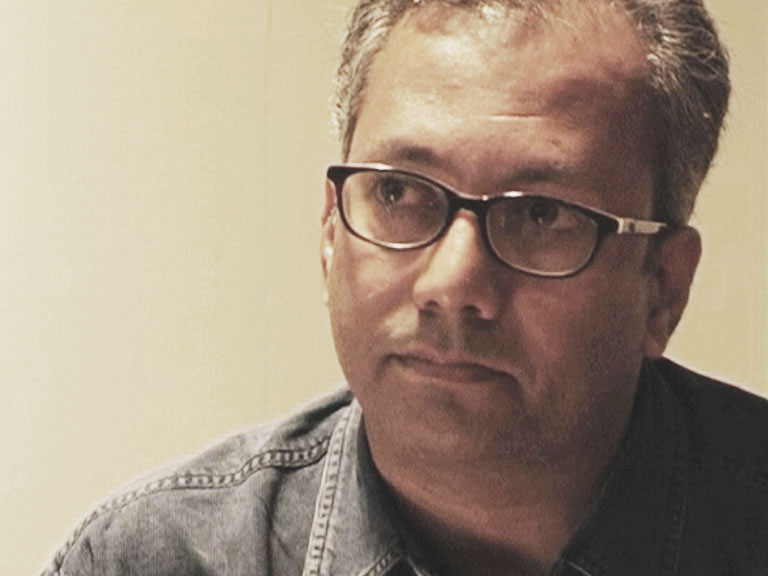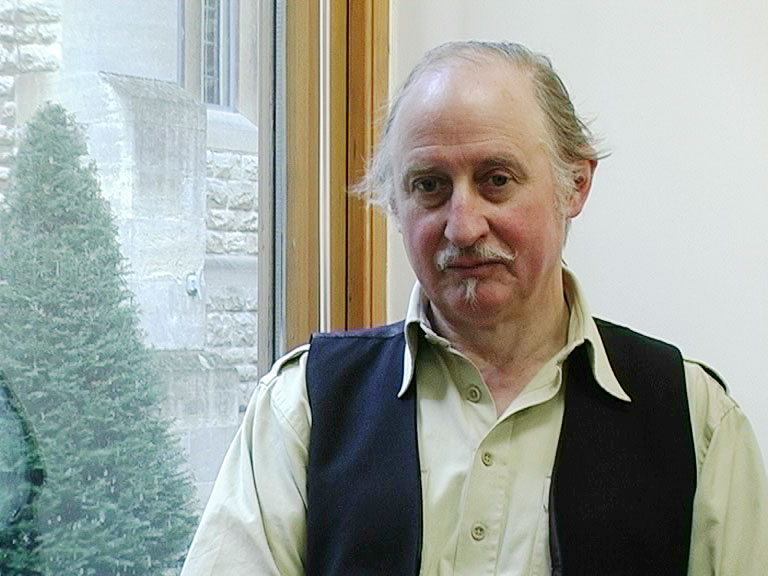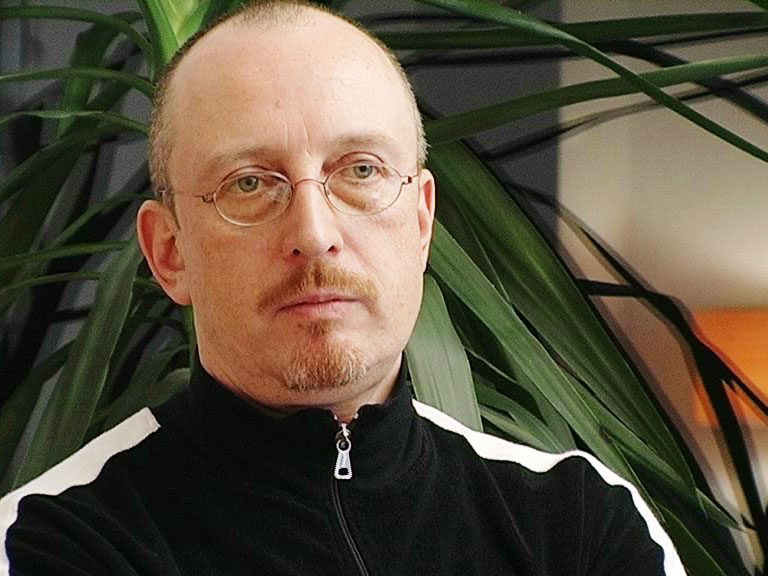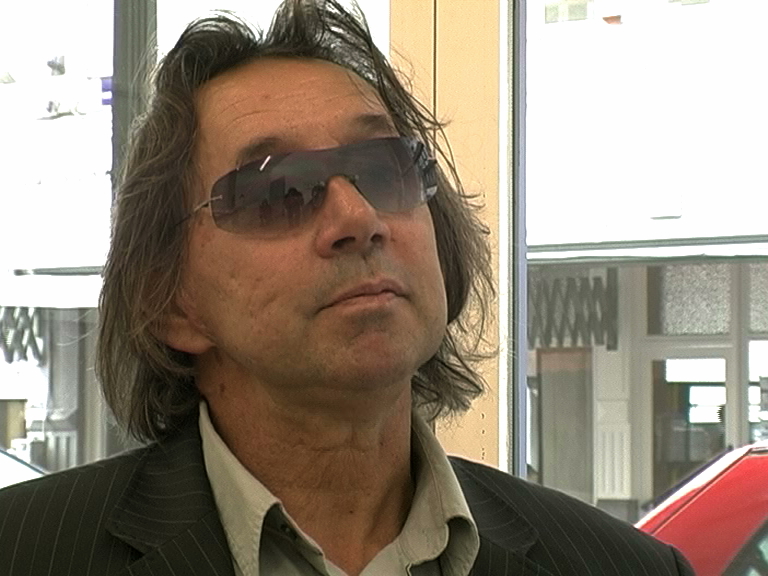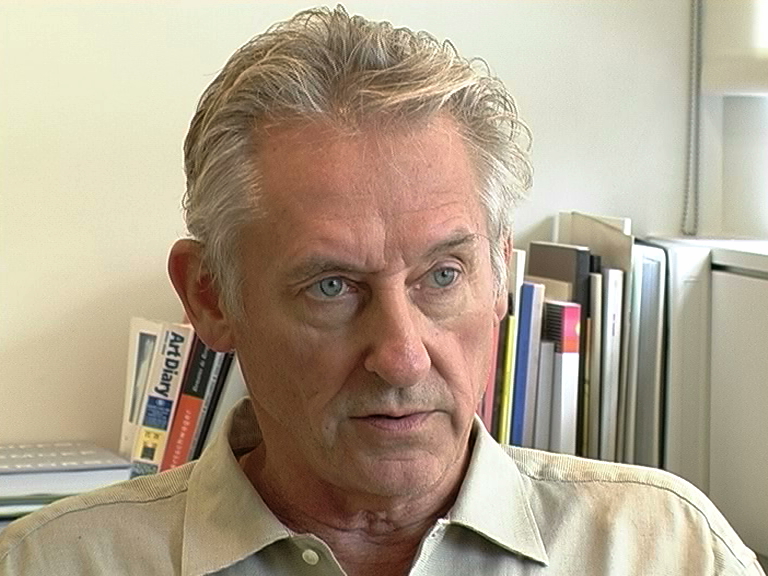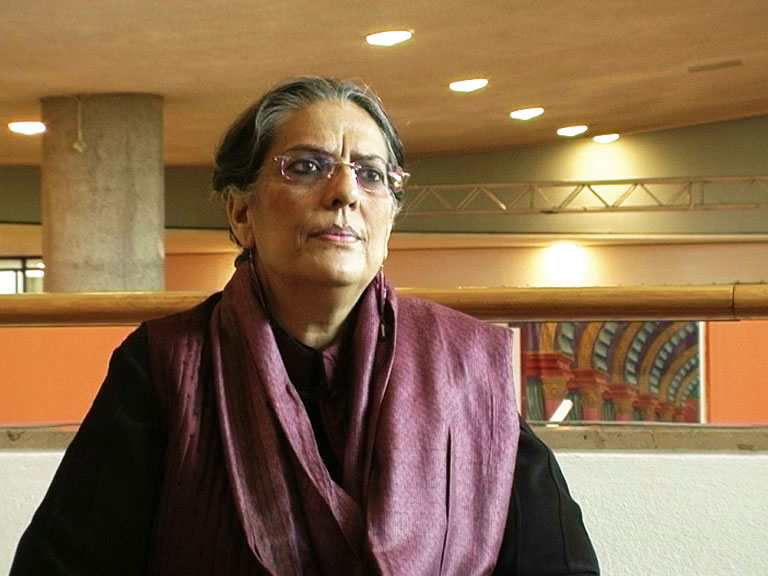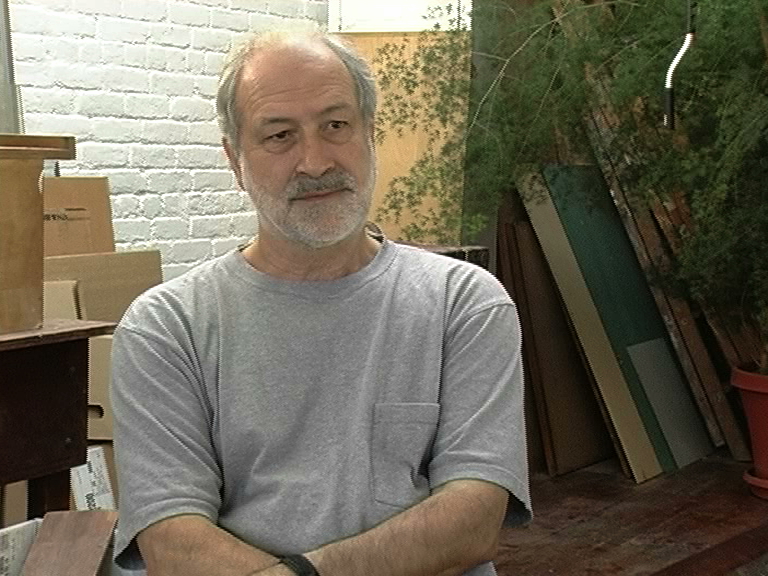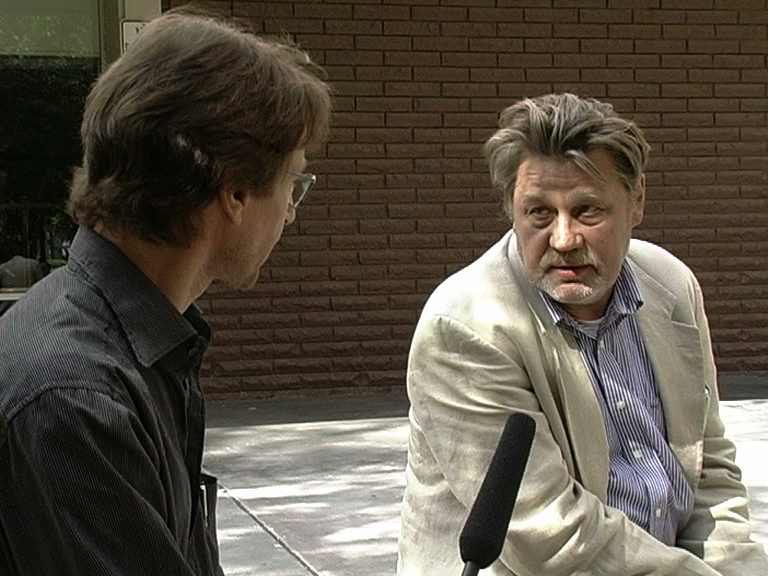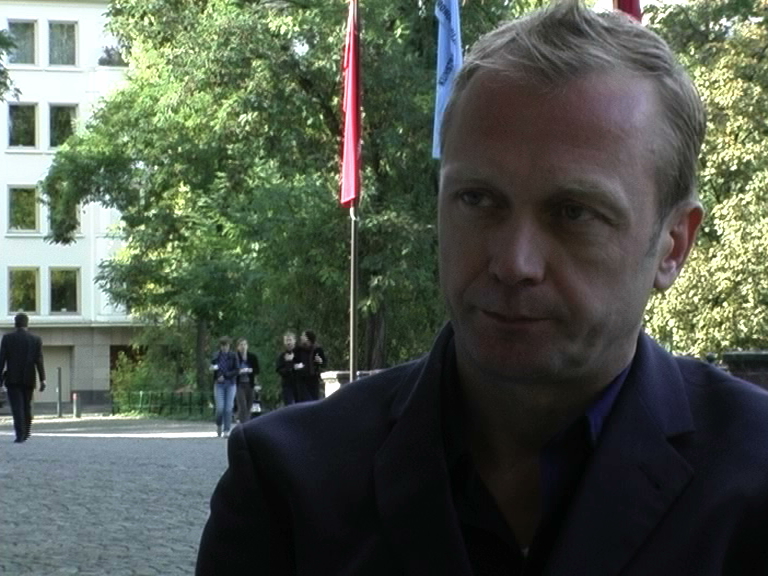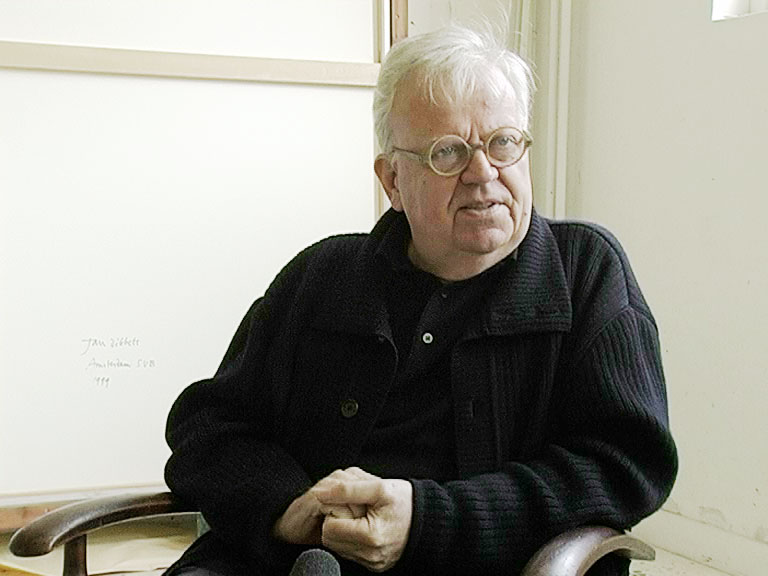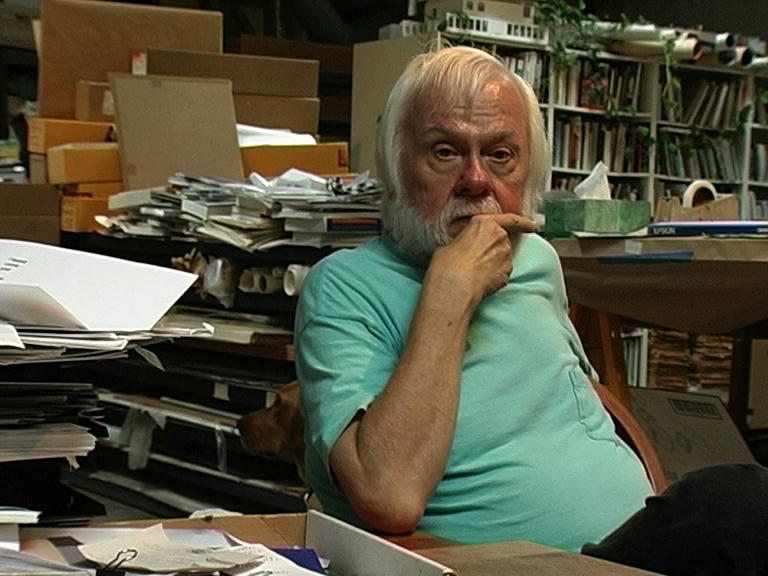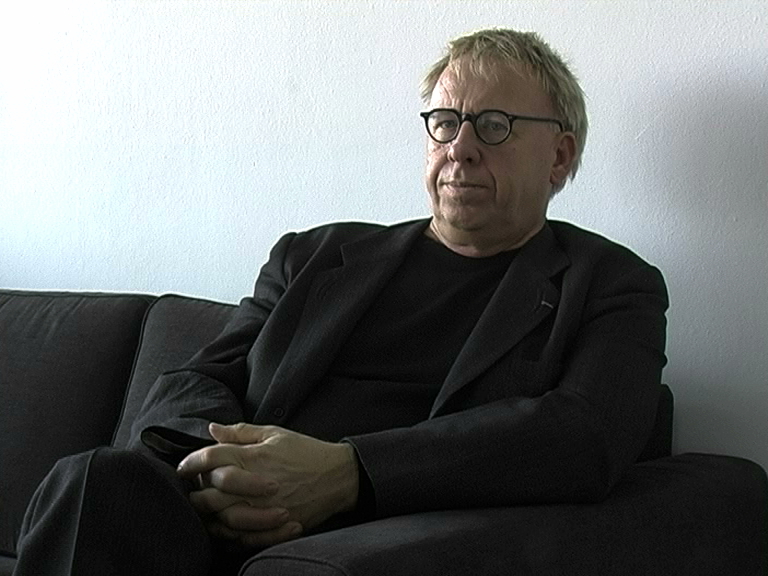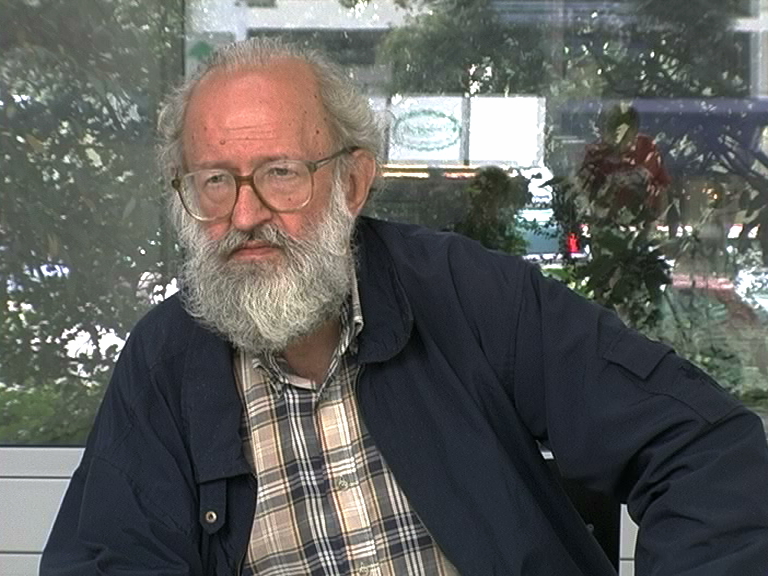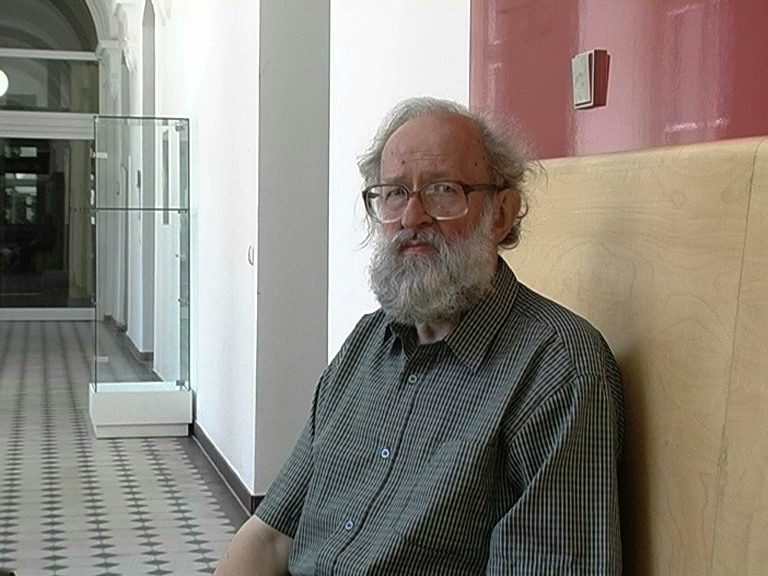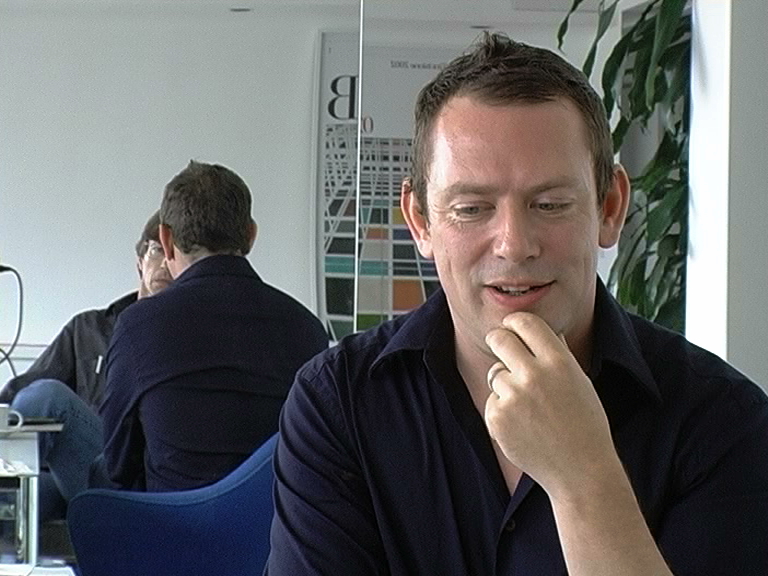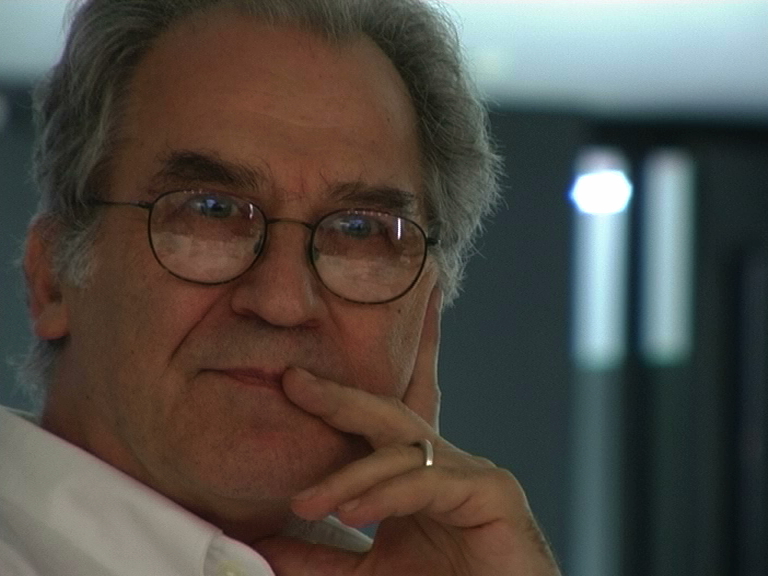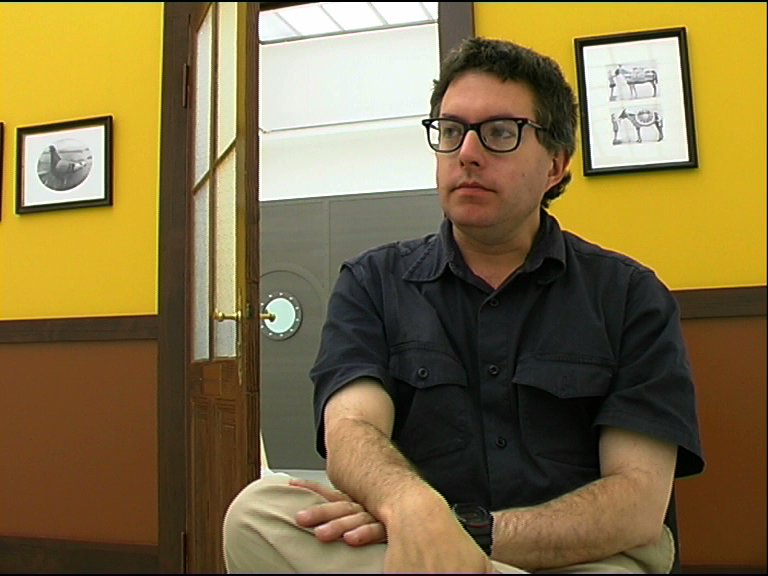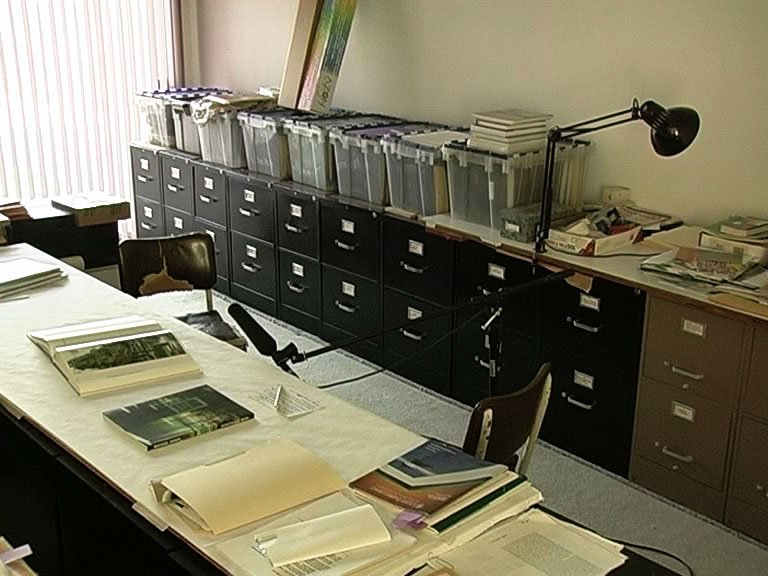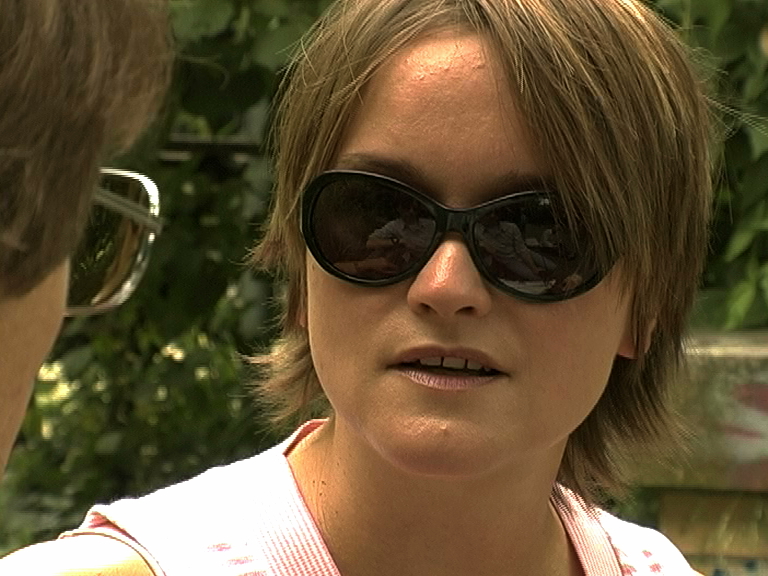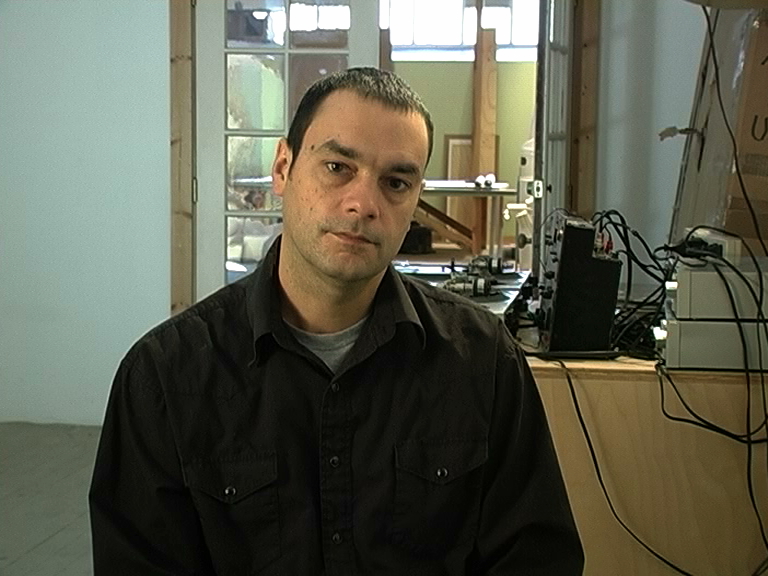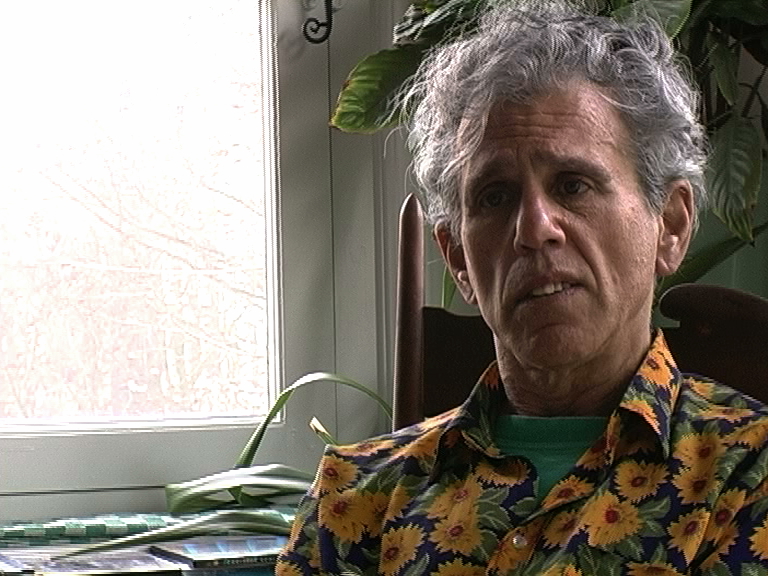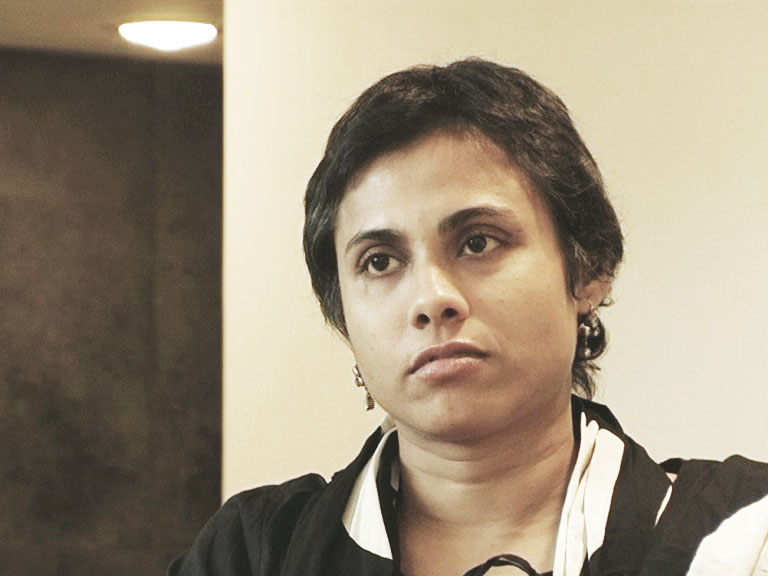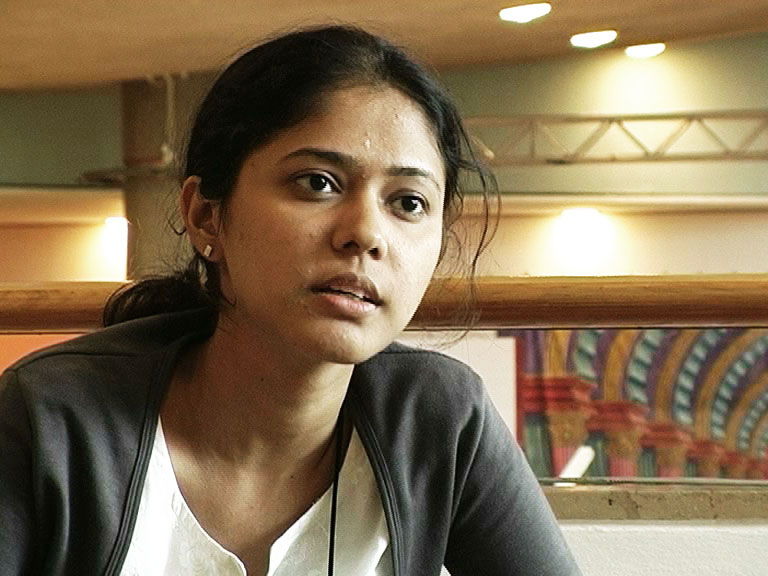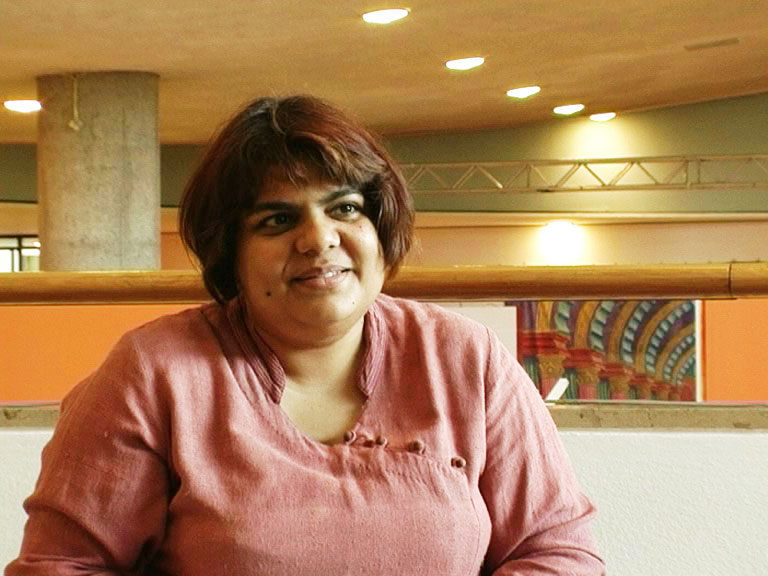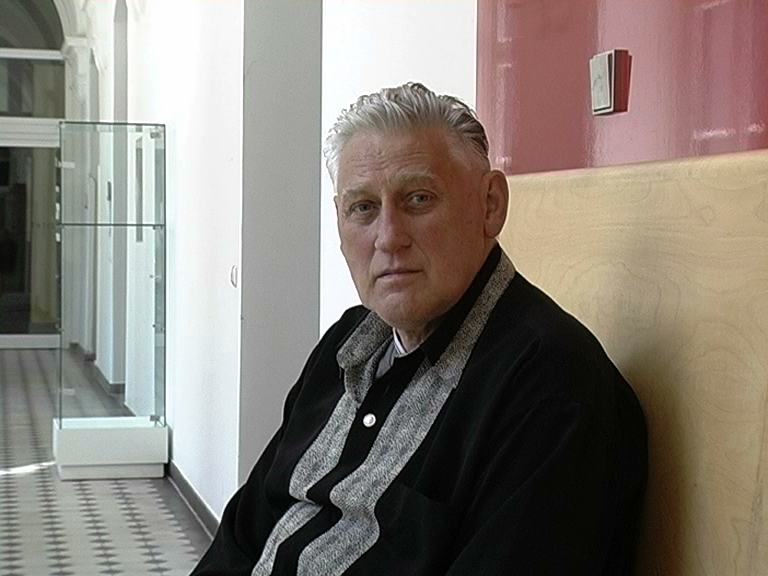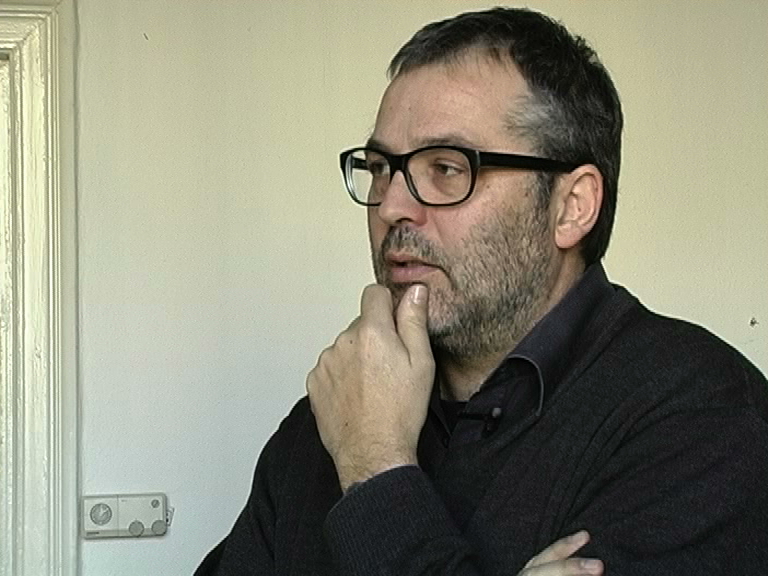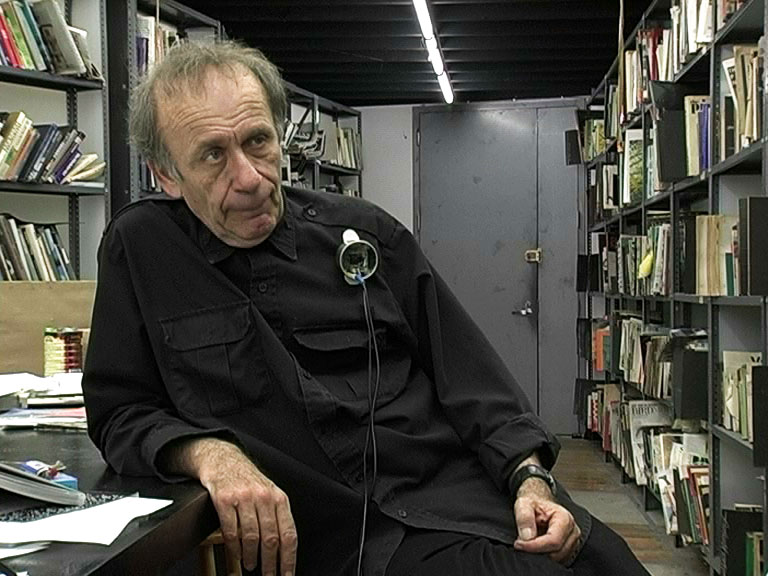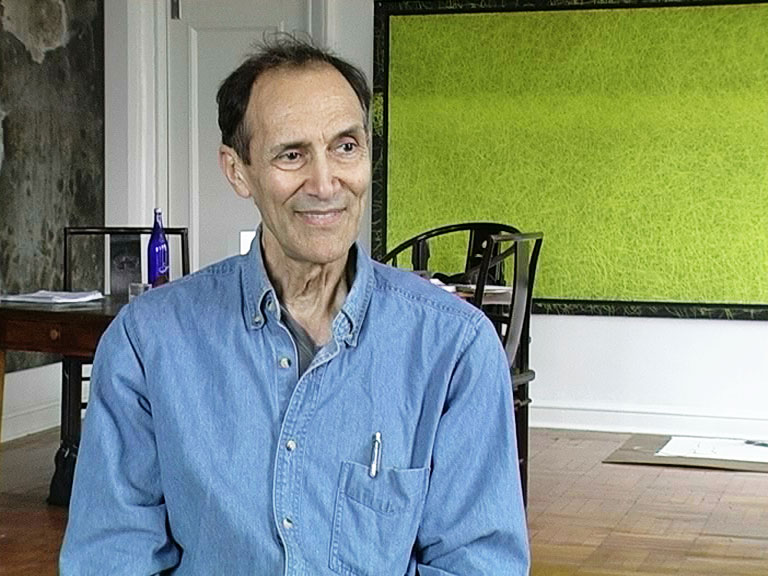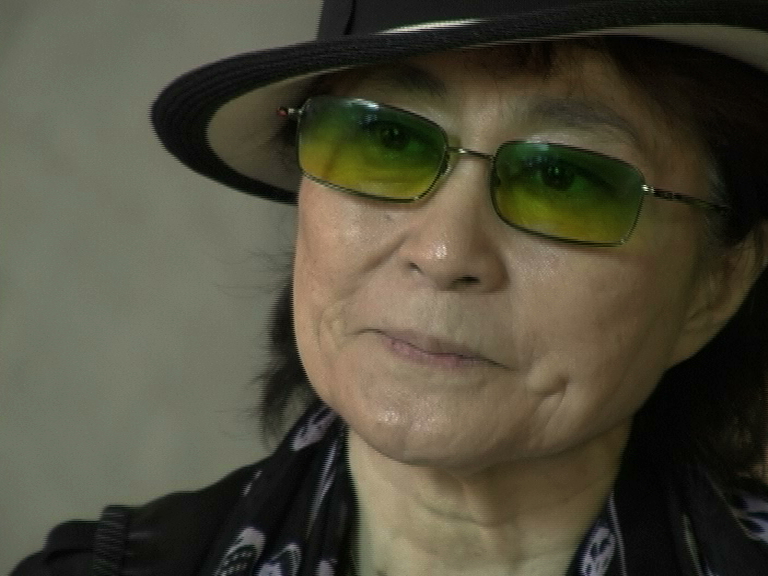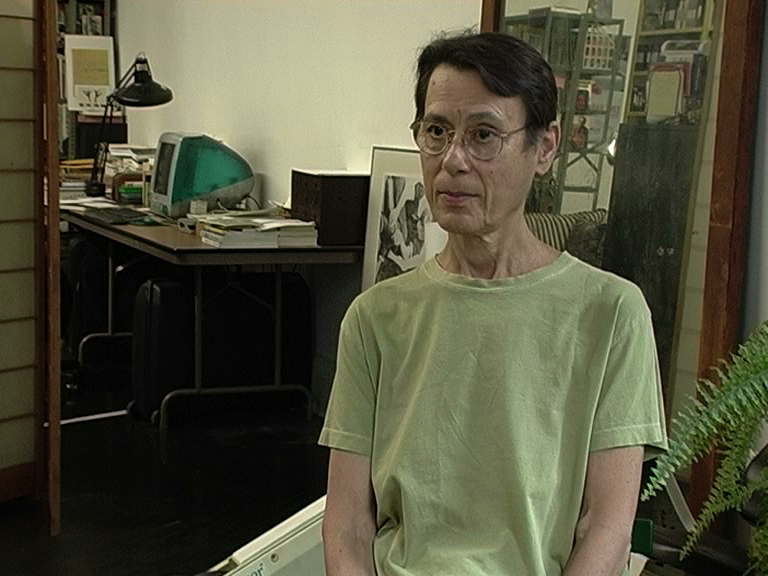S.R.: How do you describe your work in intellectual relations?
S.W.: How do I describe… I mean, you would have to say the question again because I don’t understand it.
S.R.: I mean, you were working formerly with, for example, texts, images, collages, montages, but the issues are different. You are for example working with social relations and with dynamics, communication dynamics and social groups.
S.W.: I think there is probably a misunderstanding about the intentions of these works, but, nevertheless, these works are, as all our practice does, concern the society and the world we live in; my intention is to put forward ways of approaching the visions of the future of that world; philosophical visions, also practical, pragmatic visions. To say that in a way, that this work is concerned with social relations is maybe a kind of linguistic (laughs) sort of misunderstanding about the description of these things. I think, the way of approaching… perhaps, this is to say, right from the outset of my own practice I’ve been concerned with… I saw immediately that the art was really integral to society, and that, in a way, a work of art could not operate independently of its relationships between people; in a way the work of art or the so-called work of art was a kind of channel between people, and when I came to originally think of these ideas which was in the late 50s, it was almost a heresy to think that the receiver of a work of art was as important as the originator of a work of art. But nevertheless I thought of them. Everybody lived in a kind of network of relationships like that in which certain things mediate the way in which we understand and act upon the world around us. So you may have direct experience and you have referential experience; I saw that the work of art was in a way a kind of aspect of this referentialism. At that time I was working in a art gallery, a very avant-garde art gallery; and no one came to this gallery. We put on show after show which were really fantastic exhibitions of the time in London. But no one came. I began to think about the role of the work in the gallery, this is really how things started out. I thought, well, when people are coming here: what are they are looking for? They are looking for a kind of certainty, these are icons of certainty, cultural certainty. They are either a kind of emulative in the sense that people try to emulate the projections, the ramifications that radiate from these works , or in some way they reinforce their social network in which they exist within or one thing and another. But they are certainly looking for certainty. So my idea was to ask what happens if we change the paradigm absolutely? When somebody comes to the gallery, instead of finding icons of certainty, what they find is a random variable.
At that time I was working in a philosophical think tank which was linked to Cambridge of young philosophers. Wittgenstein was around at the time, and Merleau-Ponty; there were a kind of young constructivists. And in a way Conceptualism in the 50s in England was very much part of a sort of constructivism, that’s the only area in which you could exist within. I was working with them. We got this idea of making kind of relationships with mathematicians who were working on probability theory or random variable theory. And this is how it started out. I started to think about the role of the viewer in relationship to a work of art and realized in a way that there were all kinds of variables that this relationship was dependent on, the idea of relativism. That was a very important sort of idea. Lots of things grew out of that. This idea, the fundamental role of the audience then developed to thinking: what was the functionality of our practice in society? Did it really have a kind of… Could it originate visions, ways forward, transformations of the way we approach the fabric of society that we move through? This let me to, sort of, to start to realize that the historical kind of… a sort of precedences under which artists were operating in England at that time were totally inadequate to deal with the new social landscape that seemed to be emerging in the early 60s. Consequently, I saw that in other areas of information – communication theory, even advertising, cybernetics of the time – these were other territories of information which were of importance and relevance to the approach of this new kind of cultural landscape that seemed to be dawning at that time. I made connections with this thought of thing… and began to think about the functionality of our practice, and this lead me to thinking in a way that, as such, the role of the artist wasn’t really important as an artist. I came to reverse this thinking later on in the 60s, but at that time I thought maybe the artist could operate within the interpersonal fabric of things and to transform, to reorganize it within a kind of network of society, between people, and in reorganizing this sort of network between people would originate new kinds of philosophical… or just people feeling how they were, how they approached the world around them. So what I’m saying here is that the network between people has a relationship to other people and sources of information. How it moulds – does really have an effect on moulding how we approach things… This was a sort of original kind of development; but so there is a sort of connection with ideosocial relationships but…
S.R.: If you look on this piece “Homeostat drawing no. 1”, for example book “eugenic exercise No. 1” you find this systemic thinking in a very simple diagrammatic form; it’s looking very theoretical but it’s as a drawing it’s very simple but it’s containing so much philosophical background and work of thinking. Maybe you can say something about the approach, how you start to work something like that. Is it much more coming in a process, in an epistemological process or is it… that you make the concept to make ten works of that?
S.W.: The way in which I was approaching ideas at this time which has subsequently changed to a certain extent but the idea I had of any kind of intervention really but any kind of planned intervention such as the development of art practice by an artist – could exist at different levels of resolution. So I saw that in a way you could have a conceptual model, a representation of an idea which could exist in a kind of abstract form and contain sort of philosophical ideas, and then it was a kind of operational model; which is where the philosophical ideas were taken into the idea of operation of a work of art in a particular context. And then it was a pragmatic model which was necessary to actually make this thing work. You have different languages, I mean this is sort of… also relates to the works I did in Artificial Intelligence. You have different languages at different levels of resolution; you might be talking about the same thing. We might be discussing a table, about its existence, its function, its material fabric. We are talking about the same thing but we are generating different frameworks of reference, which are cross-connected, so you are in a sort of a matrix. A lot of these drawings of this period were… just sort of philosophical ideas… which were thought of in an abstracted form but in fact were dealing with society. This particular drawing you are referring to here… is the idea of, which was very important at the time, a network of relationships in society where all nodes were of equal importance to all other nodes and information was universally shared throughout the structure. If anyone of these nodes gets a value, such as a 4 or something like that, the baseline of the whole system rises up, there is no hierarchy in this network. This was a sort of scene, the idea of a social model of mutuality, a recognition of the complexity and of people around you; different from talking about people as objects or reductive models of society. This is the idea of going in the other direction towards complexity and recognizing that within complexity there is a richness, and also complexity in itself generates more… heuristics which are more likely to be able to succeed. So this was a sort of idea at that time that I was generating all kinds of these drawings from 1962; this diagrammatic drawing, which was using early semiological ideas to analyze objects on the table; it’s like a still-life. But instead of drawing what one might have done in 1962 as a pictorial representation, I looked at the different relationships these objects had on the table using varieties of medium to kind of denote the possible connections; each of these marks is made in a different medium – ink, pencil, charcoal, whatever. – This is another drawing from the early 60s; again this is an “all-over democratic surface”, that’s what I called it at the time. The viewer was able to wander over it and create their own relationships and their own meaning. This is a central idea that we generate ourselves, the meaning of reality; we have referential experiences where people tell us about things, but in the end it’s us that’s ordering the world around us.
S.R.: Another thing you mentioned, which publication was it? A setup of groups who communicated. I can’t remember which one.//Maybe one of these books?//
S.W.: This work here from the early 70s. Just like the visual homeostat drawing you just saw, from 68. That diagrammatic representation – as I said an idea could exist at different levels of resolution. On one hand I was working to generate these models but on the other hand I’m implementing them. Near the early 70s, late 60s I initiated a series of works which demonstrated a number of things: one, that the work of art could operate directly within a community, externally from existing art institutions; it can operate within the fabric of that community and can take on the meanings and language of that community; it would have to do that to operate, that it would have to be seen to have a level of priority within that community, to engage people. There was a series of logical tenets, a kind of flow from this initial desire to operate within the fabric of society which I sort of took on board at that time; one was… to see that the work of art existed in relationship… to operate in that context it would have to operate with these variables, would have to be able to know who’s the audience of the work of art would be, the language of the audience, the things that were important to the audience… beliefs; there was a kind of interrelationship between these three variables. Initially I started with some experimental in Ipswich in 65 which took place on housing estates which took place around Ipswich and involve people directly in the process of developing a work of art. So that there is a connection between the audience of the work and the originator of the work. This seemed to be important. I had a restricted audience specified to be these people, living in this neighborhood. I was influenced by the work of Basil Bernstein at the time, he was an educational psychologist who was working on restricted language codes, and I could see this relationship between language, meaning and context. Therefore this required, before the work of art was even developed, a kind of research, reconnaissance in the neighbourhood in which it might take place.
This is too short an interview to get into all the details of these various works but once we might just talk about a little bit. This one here is the “Social Research Project for tennis clubs”. In that work I wanted to demonstrate that the work of art could operate anywhere with anybody – if the artist engaged in a kind of exchange with the audience in the development of the work. In this particular case there were four tennis clubs in Nottingham who were socially, economically, physically separate from each other, they didn’t play each other, they had no connection, but they were in the same city. My idea was that these four members of these clubs would remodel the game of tennis around what they really felt were their clubs‘ needs. When people were joining these clubs they weren’t necessarily joining it to play tennis; there were all sorts of other reasons to join in these clubs. The idea really was that this work would focus on remodelling the game of tennis, there was going to be a tournament where this game was played, the new game… But to get to that process I had to engage people in the acts of remodelling. Initially, what I did, I went around the neighbourhoods where these members lived and the tennis club environments and photographed all kinds of familiar signs and objects, things that people would know about and I then developed a series of posters and booklets which asked questions about what the meaning of these things was that were on these posters; I also asked people to make connections between posters, it wasn’t just simply: “what is this?” It’s also: ”make a connection and what comes out of it?” The first book was called “Tennis Club manual”, and this was where people described how things existed in their different tennis club environments. The second book was the “Tennis ____”, a remodelling book, people were asked to change, they transform the meaning of these things. We made displays in the local clubs, and these were things that people developed in booklets very actively, drawings, models and writings. These were then displayed in the club environments. The members of the clubs met to discuss possible ways of developing a game of tennis. We had then a tournament where these four different games were played out for a cup, the Willats Cup it was called. This was very humorous. This work took me quite a long time to develop. What’s interesting about that: on the one hand you had a conceptual model, the desire of the artist to demonstrate that another model of society and also demonstrated art practice could itself externalize itself from the existing institutional structure which was authoritative and transmissional and based on notions of certainty, and could operate to transform those things into models of exchange which I thought were richer than transmissional models, transmissional models like a radio, you are just a receiver, you don’t really connect with the origination of the message you’re obviously going to interpretate it but you’re encoding the position that you are in. What I‘m interested in was the site of exchange, that the receiver is both transmitter and the transmitter is receiver. So that you are able to ask questions. And questions seem to me fundamental to exchange in social relationships, because when you ask a question you denote that you have an incomplete model of reality, you are uncertain, and in replying you are trying to build up a model of certainty, you are trying to reduce that gap in reality. We are talking about agreement, about states of agreement. Agreement is build out of mutuality. To me this is a parameter of society. All these works were underpinning that as notions of agreement. So now we can… [leafs through book] I should talk about “Metafilter”. [picks up different book] “Metafilter” was one of a series of simulation, projects that I developed through the 60s, 70s and still developing to this very day, where social ideas are represented in a kind of closed, simulated environment. In “Metafilter”, the idea was that two people were set up in an active exchange, they built a model of society between them. “Metafilter” was completely open-ended. There was no “right” or “wrong”, “good” or “bad” associated with it. But two people sat on each side of a counter and looked at representations of other people in social situations, and then were asked a question about – which was again very difficult, sometimes quite difficult questions, philosophical questions – interpretating the relationship between these people in terms of ideologies – ideologies of competition… of cooperation, different kinds of statements. They had a thesaurus to develop responses and ultimately solutions to these questions. The idea was to find agreement; and when they agreed, “Metafilter” then took you to another state based on your agreement. If you couldn’t agree, it searched around the same sort of territory presenting you a lot of questions which might enable you to agree. Though you had this simulated situation, what it was doing, was structuring the relationship between two people into a mode of exchange… The idea was that this work would be taken to different environments, advertised in different kinds of magazines, took it to different places and involved different kinds of audiences; anybody could come to Metafilter and operate it. It’s different from the tennis project: I used the language that existed in the tennis environment, in “Metafilter” you acquire the language of “Metafilter”. Consequently the idea here was, that people could come from quite diverse backgrounds to operate it. Okay?
S.R.: Yes, if you want, you can stop now.
S.W.: I’ll just do a little bit more. [leafs through book] This is a project from the 70s, 75 which took place in Oxford. What I was trying to show… to make a relationship between the institution, the art museum, and the world around it. This was the Museum of Modern Art in Oxford, they invited me to make a project; I saw that this museum was quite connected to a housing estate nearby where people lived and worked in Oxford, but never went to the museum. This work was sort of exchange of realities between the people living there, how they saw their priorities and what was meaningful and important to them, and the world of the museum. I went to work with people over about 18 months. This work took a long time to originate. The idea was, that which extends the idea of the social resource program for a tennis club, I would develop a kind of contextual photography, that I would work with someone in their environment, home environment, their living room or something like that… and I would actually give them the camera. I will make sure that they did a good photograph. But basically they were locating objects, things that were familiar to them which they could articulate around a question which concerned something that was important to them about their life in that environment. That could have been something very simple: such as lack of social contact with the neighbours, shops not being nearby, very practical things. But nevertheless it was important to the people who lived there. In the museum was to be a kind of display of how people articulated responses to the questions posed by these people. The idea was an exchange. You went to the museum, to complete your involvement with the work you had to go to the housing estate, and people from the housing estate had to go to the museum to complete their engagement with the work. So there were two different audiences, people living on the estate and people from the museum,, but there was also a small group of people who where involved in the development of the work, and then people that who agreed to be represented on these display boards. But they developed the boards themselves, and I provided a kind of framework. And each of these boards poses a question to the viewer about… something that is of concern to the people living there. What happened here was you had a response sheet… And these responses were then positioned in the Museum of Modern art in Oxford. There was a constant toing and froing of people between the museum and this housing estate which never happened before and unfortunately has never happened since.
S.W.: I’ll just continue really in response to some of your original questions. One thing I would like to say: The world moves on but even so some of the concepts and ideas that were originally involved in the early 60s are still sort of engaged, I’m still engaged with more recent manifestations of these ideas. But I think, that some very important things are happening… which are changing, even the recognition of ourselves as people in relation to other people. Increasingly our practice has to recognize the fluidity within society, in relationships, and also the term… stemming from that the idea of relativity in perception and understanding… These are important thing to get to grips with, and also the notion of coming back to the idea of art practice itself, that the audience, the so-called audience – they are not an audience in my opinion but – the so-called audience are probably more important than the artist; no work of art can be independent of this relationship, and it’s the audience of society that makes the meaning to the work of art. … Increasingly we can recognize this to the point where we can divest authorship away from the artist into a kind of social situation. Recently I’ve been working in Liverpool with the residents of some group of flats, tower blocks in Liverpool. This is sort of being more than an embodiment of these ideas where, over a period of time, two people have come together who didn’t know each other before but nevertheless lived in this neighbourhood, and they’ve made a walk, a journey into, together with different means of recording reality that they came across – film cameras, still cameras, audio tapes and so on. And they’ve made a kind of walk, and this is a different one but it’s always the same, the same walk through a fabric of things … housing estate, into a park, into… a particular kind of walk. I asked each person to record the language of this environment that they had been walking through… and record items – you know, signs, objects, anything really that they felt that could have another meaning for them. The idea was here, that if one person found something, the other person also tried to record it from their own perspective, they tried to find a kind of agreement, so like the two of us, walking together and you had a camera and I had a camera and we found something. I could maybe make a shot and then you would say: “What does that really mean? Talk to me!” and then you would try to make a shot. And this information… is about twelve different couples of people made this walk, and then we made a workshop about a month later where all the material that people had gathered together was brought into this workshop. We had all kinds of interactive facilities that would extend the dimension of the workshops. So we had, internet connections, computer terminals, even typewriters – all kinds of means from which people could rework this information. They tried to develop a symbolic journey, symbolic journey together, each person. “If we had done a walk together we would then be trying to make a symbolic journey”… but it would be based on agreement. What we could agree? We had a two- or three-day period in which we would try to develop this. And this was an extremely significant experience for the people involved… because they really tried to agree. Each journey was completely different from the other one. And this then we made as an installation in the foyers of the buildings in which people lived – a multimedia installation, what I call “Multichannel”, made up with sorts of displays, films, sound recordings and things like that. That has been presented over a three-week period for other people to not only to look at, but to think about making the same journey, making the walk themselves, the same group, as a a sort of guide book that you can take with you. The interesting about that work was… – unlike the “tennis clubs” in the late 60s, where I had a kind of model in advance, like a conceptual model in advance which I tried to bring down to reality by taking it through a different resolution – I very purposefully started from a kind of “zero”; I just went up there and had meetings with the people; so I didn’t have a kind of advance model, and the model came out of the discussions I had with people; and obviously I kind of guided the project through and gave it a framework and it was important, that I instigated the means by which people could engage with this framework – the provided facilities, provided times and all that kind of things for people to do things. But interesting, I think, it was quite a different way of operating. In that means of operating I’m trying to recognize the randomness of relationships, they sort of try to again divest myself from the idea of these advanced models and to… acknowledge the fluidity of the situation in which you arrive in. And that relates of course to a lot of works in this exhibition… this sort of ideas.
S.R.: These are good last words, and we can start to look at some of the exhibition. Thanks a lot, thank you very much. It was a pleasure. Thanks.






